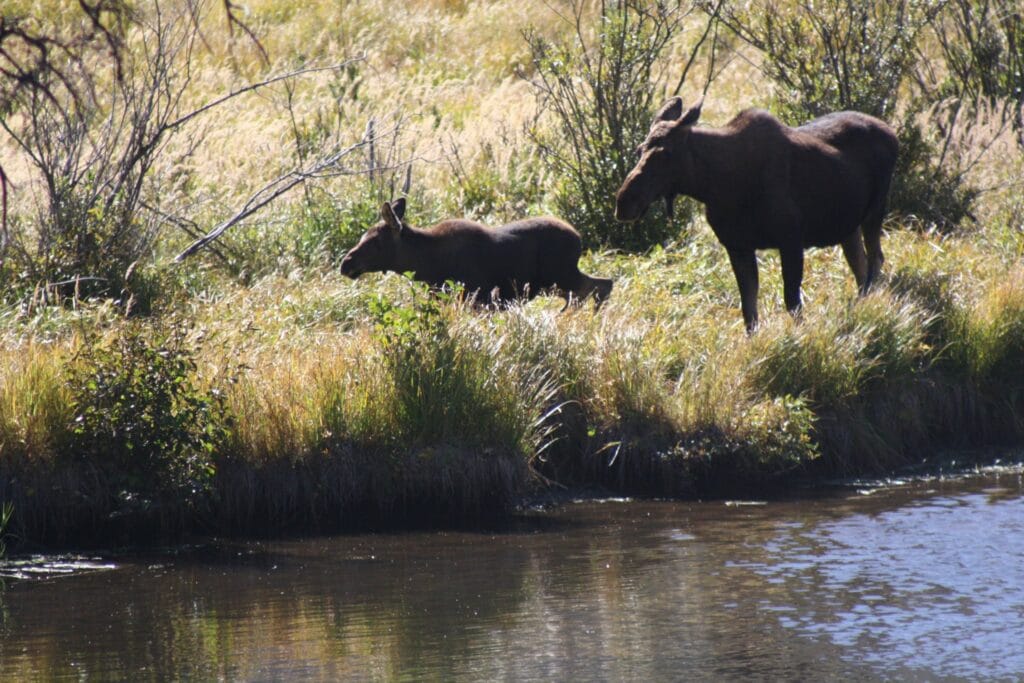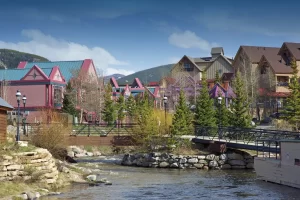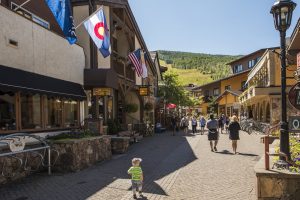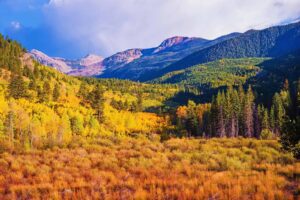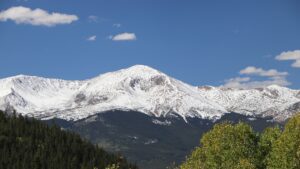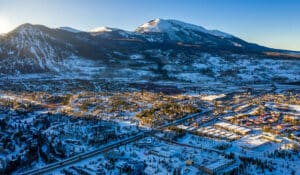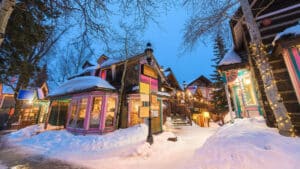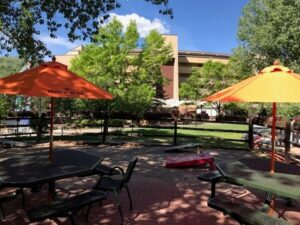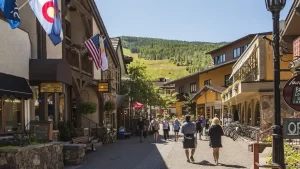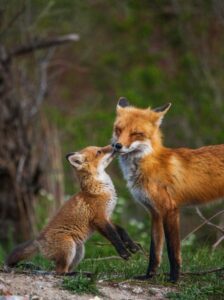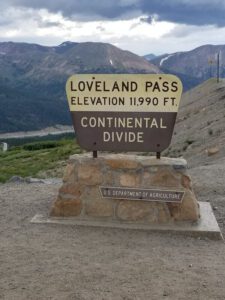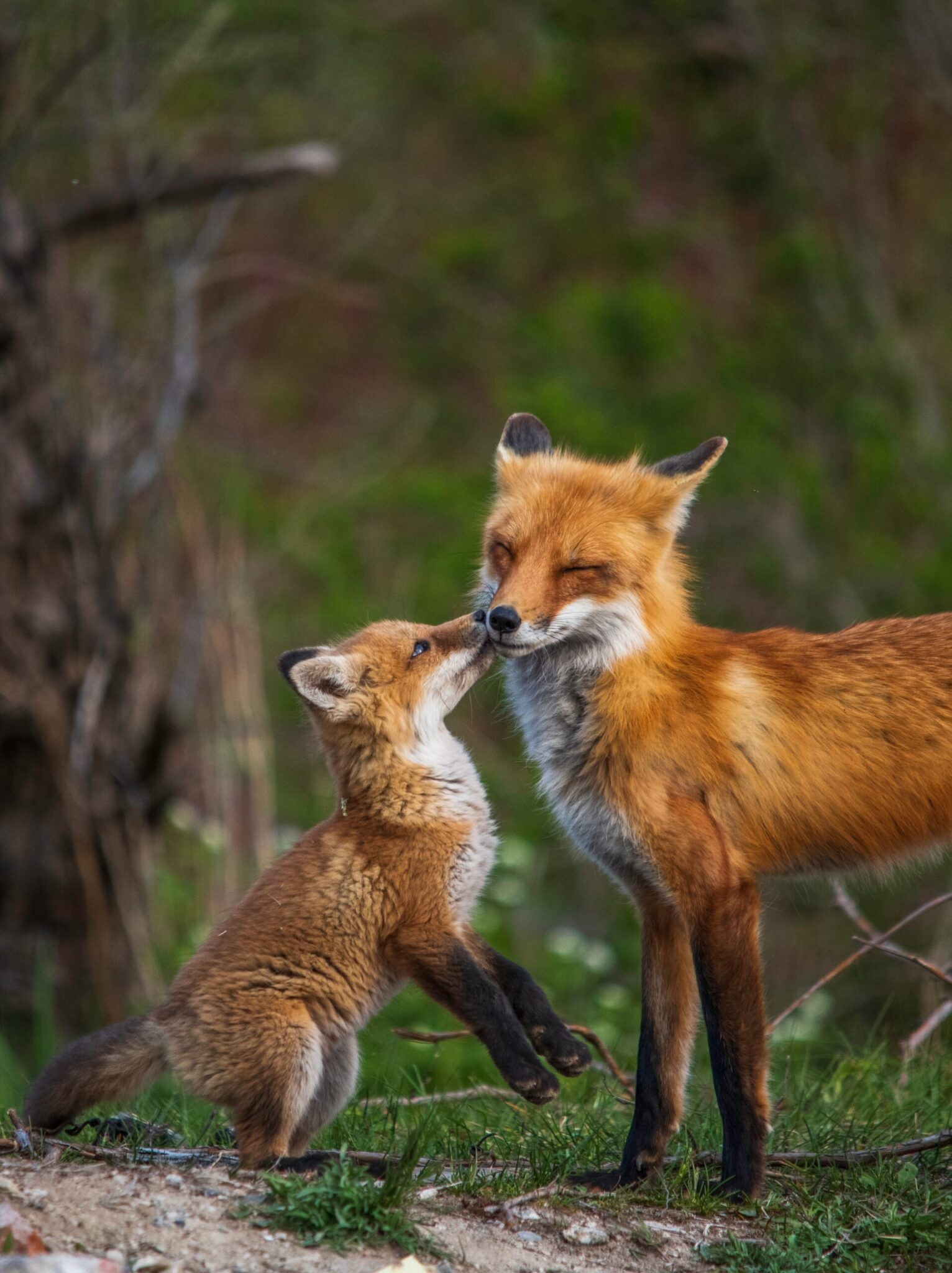
Wildlife in the Colorado High Country
When traveling in the high country there are many different kinds of animals you might encounter. Read on to learn more about the wildlife in the Colorado High Country.
Elk
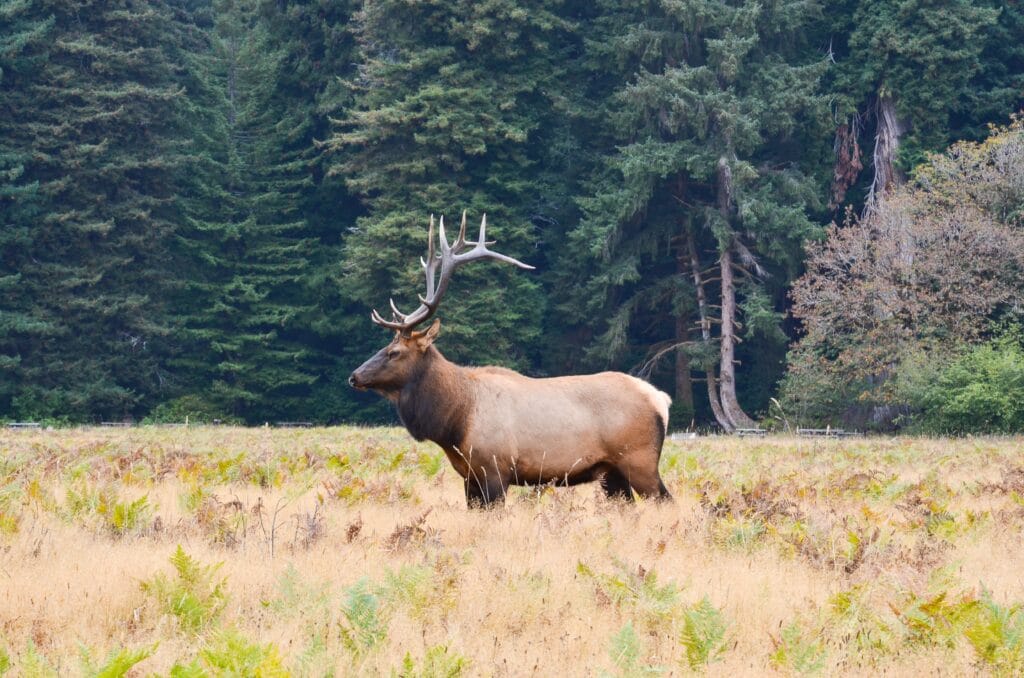
- A male elk is called a bull. A female elk is called a cow, and a baby elk is called a calf
- A Bull Elk can weigh up to 700 pounds and grow to 5 feet tall at the shoulder
- Calves are born with spots and have no scent, to keep them safe from predators
- Only male elk have antlers
- Antlers on a fully grown bull elk can weigh up to 40 pounds
- Listen for bugling in the fall. This is how the bull elk attempts to attract cow elk for mating
- Bulls gather cows and calves into groups called harems, and will aggressively guard the harem.
- The Shawnee name for elk is Wapiti. This means “white rump”
- A mature elk is able to run as fast as 40 miles per hour
- Please view elk from a distance and enjoy watching these magnificent animals in their natural habitat
Moose
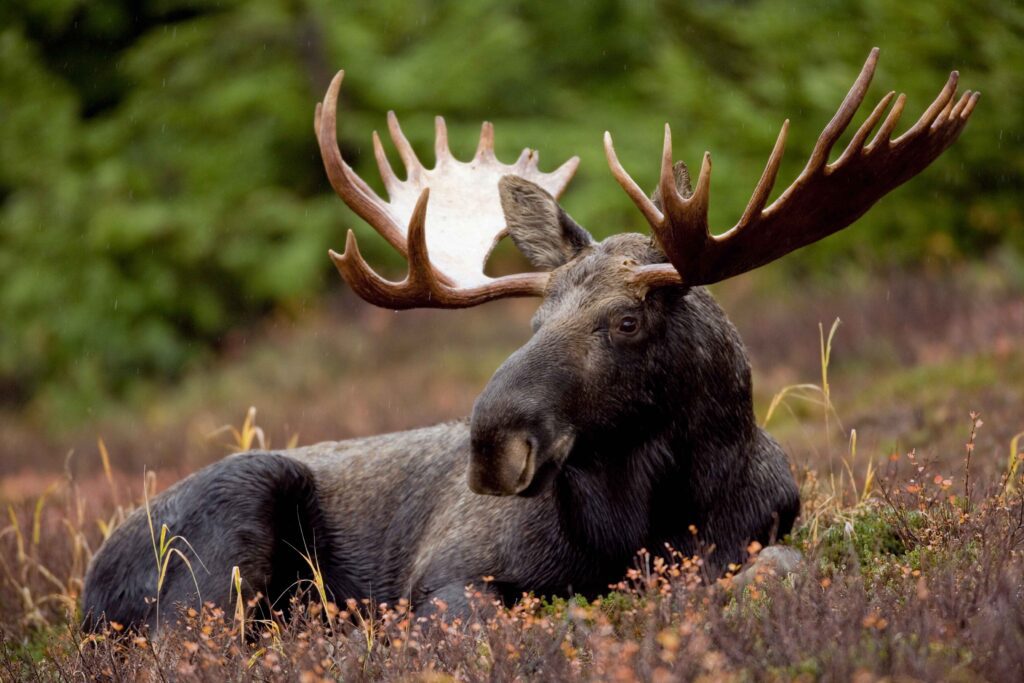
- Moose were reintroduced in Colorado in 1978. Currently there are approximately 3000 moose in Colorado, from the original 24 reintroduced
- They have a lifespan of approximately 20 years
- The moose in Colorado are the Shiras subspecies. They are smaller than the Alaskan moose, but can still weigh over 1000 pounds and stand 5 feet 9 inches at the shoulder
- Moose are in the deer family and shed their antlers every winter, with new ones growing by the end of summer
- Moose are faster than they look and can run up to 35 miles per hour
- They like to eat aquatic plants, and can stay underwater for over 30 seconds
- Moose like cooler temperatures below 80 degrees Fahrenheit, making the Colorado high country the ideal habitat
- Moose are able to travel through deep winter snow, thanks to their long legs
- They often are not seen, as they spend a lot of time in the dark cover of willows and forests
- In order to conserve energy, moose are not as active during the winter months
- Moose are unpredictable. If you are lucky enough to see one, please enjoy from a respectful distance
Bighorn Sheep
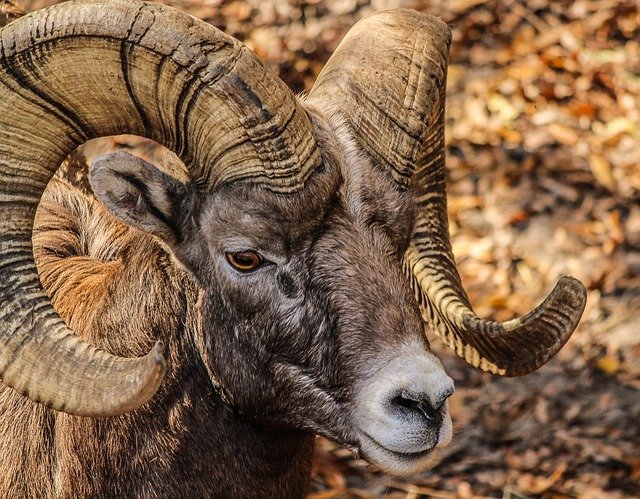
- Bighorn sheep are the largest wild sheep found in North America
- Males can weigh over 300 pounds and stand over 3 feet tall
- Females are about half the size of males
- During winter their coats become thicker and lighter in color. They shed the thicker coats for summer
- Bighorn sheep have wide set eyes that provide a large angle of vision. They also have sharp hearing and a highly developed sense of smell
- Their specialized hooves and rough soles provide a natural grip for the sheep to jump on rock faces and cliffs
- Male sheep are called rams and female sheep are called ewes
- The sheep have true horns for their lifetimes. By the age of 8, the horns curl around the males faces. These horns can weigh up to 30 pounds. Females have small horns that come to a sharp point by age 4
- When mating occurs in the fall, rams use their horns to battle for dominance
- The sheep prefer to live a steep mountainous habitat making them often hard to spot
- If you are lucky enough to spot a bighorn sheep in the Colorado high country, please view from a respectful distance
Mountain Goats
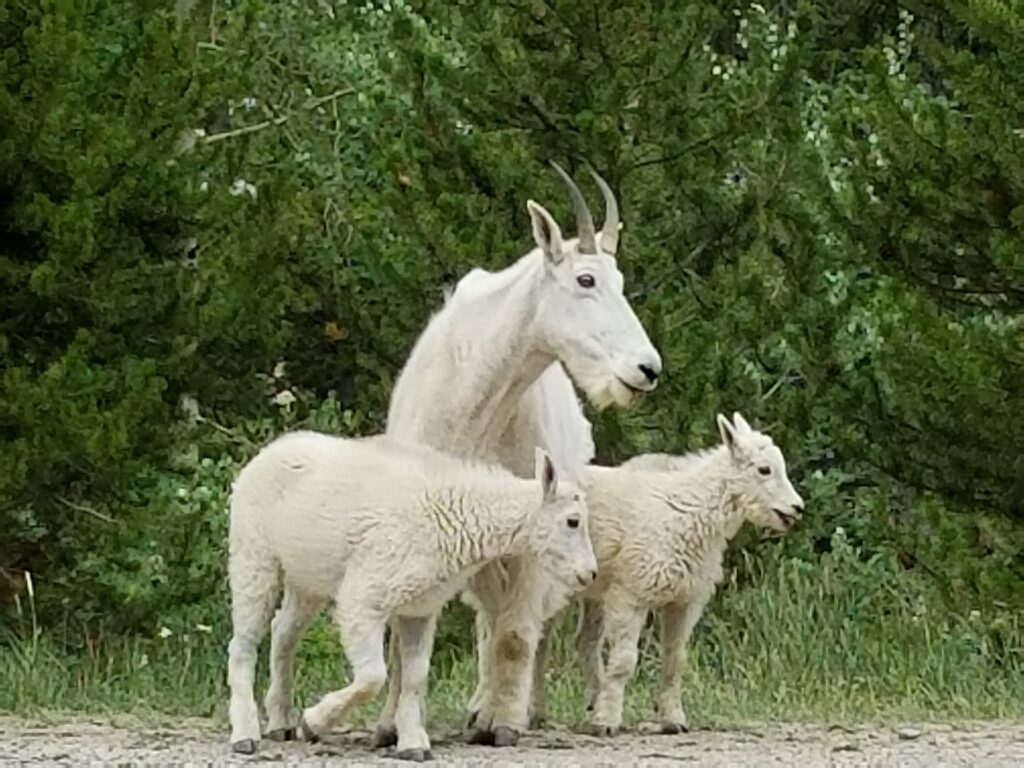
- Mountain Goats live in alpine and subalpine environments. In summer, they stay above tree-line and migrate to lower elevations in the winter
- Male mountain goats are called billies, female mountain goats are called nannies, and baby mountain goats are called kids
- Within a few hours of birth baby mountain goats are up and scaling rocks with their mothers
- You can tell a mountain goats age by by counting the rings on their horns
- Mountain goats generally live between 9 and 12 years
- Like any of our wildlife in the Colorado high country, mountain goats can become extremely aggressive, especially during mating season and when protecting their young, so please observe from a safe distance.
Black Bears
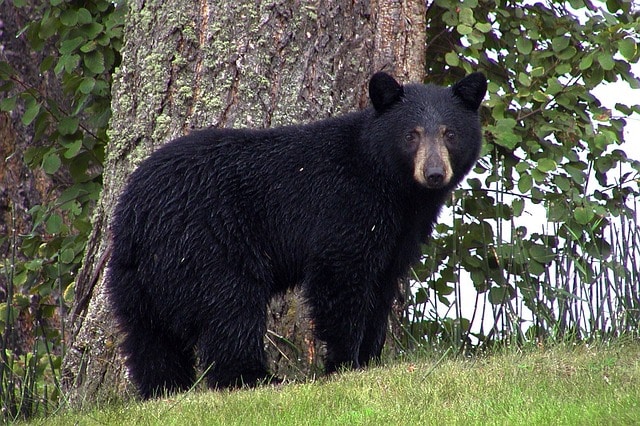
- Black bears aren’t always black. Their colors can range from blonde, cinnamon, brown, or black
- Males average 275 pounds and females average 175 pounds
- Bears natural diet is grasses, berries, fruits, and nuts
- In Colorado the bears hibernate over winter. Bears are active from about mid-March to early November
- Bears can smell food 5 miles away. Once bears find food they will return for more
Mountain Lions
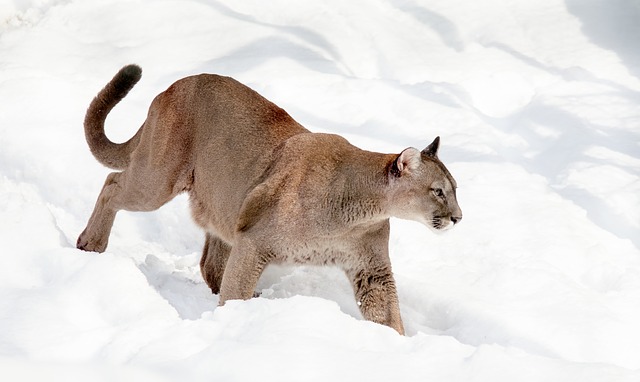
- Mountain lions are generally elusive, making them a rare sight
- They usually live in remote country with plenty of deer to eat, and cover to stay out of sight
- Male lions can be more than 8 feet long and weigh 150 pounds. Females average 7 feet and 90 pounds
- Lions are usually most active between dusk and dawn
- Females usually give birth to 2 or 3 kittens at a time
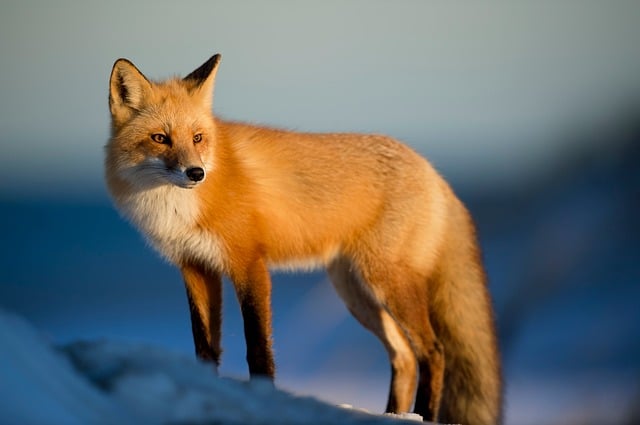
Foxes
- In Colorado there are red foxes
- Red foxes are not always red, they can be red, black, silver, or cross
- Adult foxes weigh between 8-15 pounds
- Foxes are generally most active at dusk and dawn
- Red foxes are usually opportunistic omnivores
- Foxes are very vocal. They often bark or yip
In conclusion, seeing wildlife when visiting the high country can be very exciting. There are some general guidelines to follow when viewing any animal. First, always view from a distance. All of these animals are wild and can be unpredictable.
Second, please never feed our wildlife, this can cause many issues. We do not want the wildlife to become dependent on humans for food. This can cause the animals to spend too much time with humans, and cause aggression towards people and pets.
Third, please leave the area if the animal seems to be uncomfortable. Animals show distress by raising the hair on their back and shoulders, stomping their hooves, laying back their ears, or huffing.
Another thing to keep in mind is to always have your dog on a leash. Many of these animals will become very aggressive with dogs, because wolves are one of their natural threats. Dogs look similar to wolves, and the animals may not know the difference. By keeping your dog on a leash, you are helping protect your dog and the wildlife in the Colorado high country.
Enjoy the wildlife in the Colorado High Country as you savor your Rocky Mountain vacation!
Want to learn more about our Colorado wildlife? Check out the Colorado Parks and Wildlife website!
